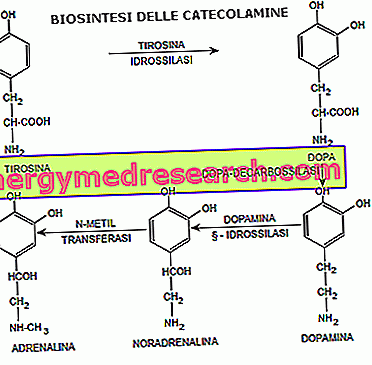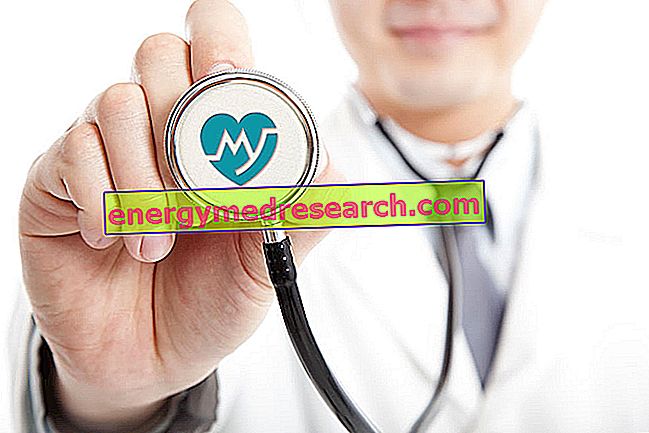Catecholamines: what they are
Adrenaline and noradrenaline are two hormones secreted by the medullary layer of the adrenal gland and some nerve endings (noradrenaline).
These two hormones intervene in the adrenergic reaction called "FIGHT OR FLIGHT", or you fight or run away. As can be guessed from its name, this reaction aims to prepare the organism for an important psychophysical effort in a very short time:
- facilitating the use of muscle energy substrates
- removing the catabolites (increases renal flow)
- increasing energy intake to vital organs
- facilitating the reconstruction of energy reserves
Adrenaline
Functions:
- increases cardiac output
- increases systolic blood pressure
- diastolic blood pressure decreases
- increases muscle blood flow
- increases renal and cutaneous blood flow
- increased glycogenolysis and lipolysis
- peripheral vasoconstriction
- splanchnic vasoconstriction
- vasodilation in the hepatic and muscular areas
- increased metabolism
- bronchiolar dilation
- increased vigilance

Adrenaline is secreted in response to very low stimuli and reaches a peak around 60% of VO2 max.
| Factors that stimulate catecholamine secretion | |
| Anxiety Cold Ache traumas Physical efforts | Hypotension Fear Hypercapnia Intense pleasure Hunger |
During a static muscle exercise the adrenaline secretion prevails over the norepinephrine secretion.
Norepinephrine
Functions:
- increases cardiac output
- increases the total peripheral resistance
- increases blood pressure
- increases coronary flow
Norepinephrine is instead secreted in response to high intensity stimuli and its secretion is proportional to the intensity of the exercise. Around 70-75% of VO2max there is a peak in noradrenaline secretion.
.


Adrenergic activation
Increased catecholamine secretion prepares the body for high psychophysical stress:
- increasing bronchodilation
- increasing the number of breaths (tachypnea)
- increasing glycogenolysis
- increasing gluconeogenesis
- increasing lipolysis
- inhibiting glycogen synthesis
- decreasing insulin
- increasing glucagon secretion
- increasing glycolysis
THE ADRENERGIC REACTION IN RESPONSE TO THE PHYSICAL EXERCISE IS ALSO INFLUENCED BY:
- DURATION OF THE YEAR (increases with the duration of the year)
- TRAINING (decreases with training)
- FAST (increases in fasting states in response to hypoglycemia)
- TEMPERATURE (increases with decreasing temperature)



